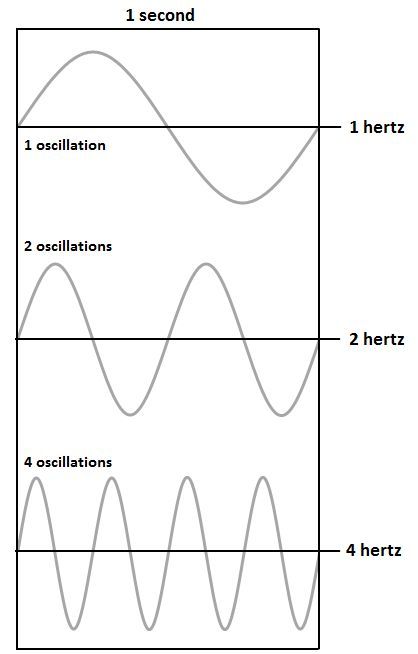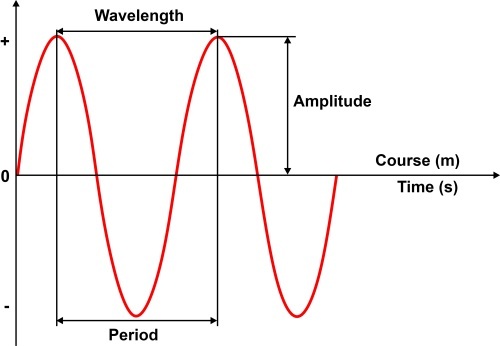General
Electromagnetic fields are ubiquitous in our environment. In physics, as light, they belong to the electromagnetic waves. In the electromagnetic spectrum different ranges can be distinguished according to their frequency and wavelength (see also Electromagnetic spectrum).
Frequency f
The frequency is defined as oscillations per second, given in units of Hertz (Hz). 1 Hz corresponds to one complete oscillation per second (1 Hz = 1/s), such as in mechanical oscillations (e.g. vibration, sound waves, and heartbeats) or electromagnetic waves (e.g. light and electromagnetic fields). 2 Hz corresponds to two complete oscillations per second, 3 Hz to three oscillations per second, and so on. The period describes the time, in which one full oscillation takes place (e.g. 1 s at 1 Hz, 0.5 s at 2 Hz, and so on; see figure).
Wavelength λ
The wavelength is defined as the length of one oscillation of an electromagnetic wave (also called length of a “period”), given in units of meters (m).
Frequency and wavelength relate directly to each other: the higher the frequency, the shorter the wavelength (see figure).

Amplitude
The “strength” or “height” of an oscillation is called amplitude (see figure). Depending on the kind of oscillation, different units are used. In the range of electromagnetic fields these are:
- the electric field strength E (unit V/m) for the electric field,
- the magnetic field strength H (unit A/m) or in matter the magnetic flux density B (unit T) for the magnetic field, and
- the power flux density S (unit W/m2)for the electromagnetic field.
